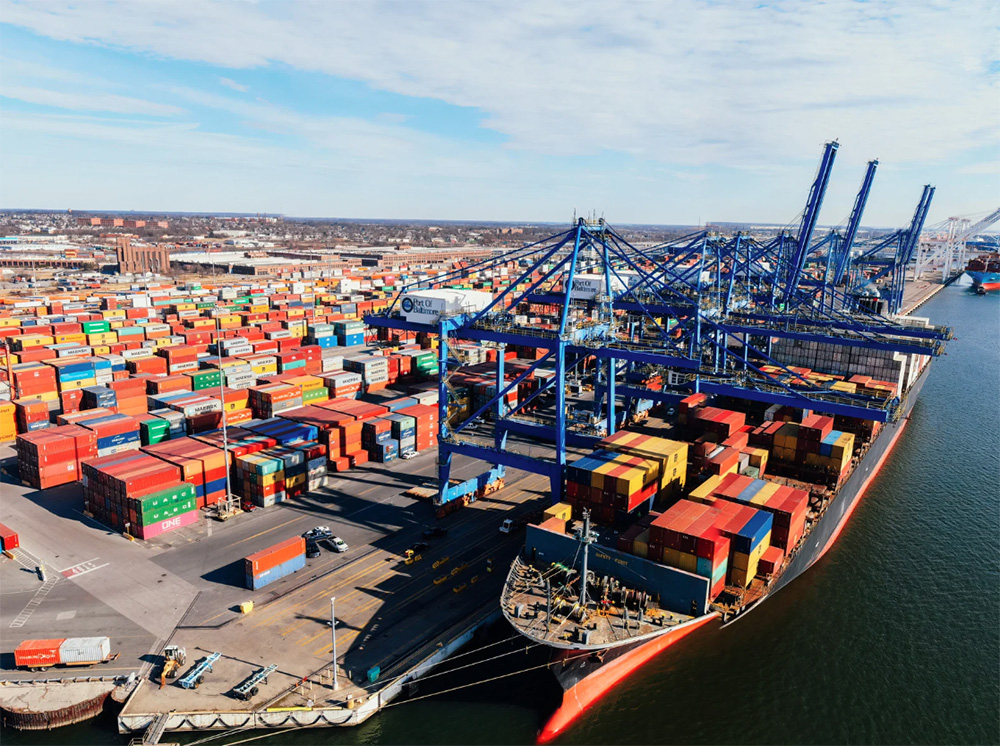
What We’re Excited About at ACPA Ports Canada 2025
The Power of Data-Driven Decision Making in Ports From September 16–18, port leaders from across Canada will gather in Halifax, Nova Scotia for the ACPA
Ports and pilotage authorities aren’t just gateways for trade – they’re prime targets for cybercriminals. In 2023 alone, maritime organizations reported a 400% increase in attempted cyberattacks compared to five years earlier. Ransomware attacks on critical infrastructure continue to rise, and maritime operations are increasingly in the crosshairs.
The consequences are severe and immediate: A single breach can freeze vessel movements, lock billing systems, compromise years of financial data, and damage a port’s reputation with shipping lines and regulators for years to come.
For IT leaders responsible for port and pilotage systems, this isn’t an abstract risk or a future concern. Weak maritime software security is a direct, quantifiable threat to revenue capture, regulatory compliance, operational continuity, and stakeholder trust.
The question isn’t whether your organization will be targeted. It’s whether your systems can withstand the attack when it comes.
Cyber attackers follow a simple calculus: they go where disruption creates maximum pressure and where defenses are weakest. Port authorities, pilotage organizations, and marine terminals check every box.
Port disruptions create cascading delays across national and international trade networks. Attackers know this leverage translates to ransom payments.
Many maritime organizations still operate legacy billing and dispatch tools that lack modern security frameworks. These systems were built for functionality, not threat resistance.
Port management systems contain invoices, contracts, vessel schedules, personnel records, and customer financial information. This data has both operational value and black-market appeal.
Maritime organizations face strict compliance requirements around data protection, audit trails, and financial reporting. A breach doesn’t just stop operations – it triggers regulatory scrutiny and potential fines.
The combination of high-impact disruption potential and low-maturity defenses makes maritime software systems an attractive, low-resistance target for ransomware gangs and nation-state actors alike.
Too many port authorities and pilotage organizations still rely on software infrastructure built for a different era:
These approaches weren’t designed with security in mind, and they create cascading vulnerabilities:
If your port or pilotage authority still uses legacy tools for billing, scheduling, or dispatch, the attack surface is already wide open. You’re not defending against sophisticated threats – you’re hoping attackers simply haven’t noticed you yet.
Security breaches aren’t “just technical issues” that IT teams clean up over a weekend. For maritime organizations, they translate directly into business-critical failures.
When billing systems are compromised or locked by ransomware, vessel movements continue but charges aren’t recorded. A port authority that loses access to its billing system for even 48 hours can miss tens of thousands in wharfage, pilotage, and service fees.
Even after systems are restored, reconstructing billing records from paper logs or backup systems can take weeks. Customers delay payments when they receive invoices 30-45 days late.
Port authorities operating under Transport Canada regulations, provincial privacy laws, or international compliance frameworks face penalties when they can’t demonstrate adequate data protection. These fines often exceed the cost of implementing proper security in the first place.
When dispatch systems go offline, pilots can’t be assigned to vessels. Ships wait at anchor. Terminal operations grind to a halt. Every hour of delay costs shipping lines money, and they remember which ports create bottlenecks.
Shipping companies, logistics providers, and trade associations share information quickly. A port known for security incidents becomes a port that sophisticated operators try to avoid.
Many jurisdictions now require organizations to notify affected parties when personal or financial data is compromised. This means costly legal reviews, customer communications, and potential lawsuits.
For IT leaders in maritime organizations, failing to modernize security isn’t a neutral position – it’s an active liability that compounds with every passing quarter.
Protecting port and pilotage systems requires more than installing firewalls or running quarterly vulnerability scans. It requires secure, modern software platforms built specifically for maritime operations with security, compliance, and resilience at the architectural level.
Here’s what that means in practice:
Every user should have exactly the permissions they need – no more, no less. Financial staff shouldn’t access dispatch schedules. Operations teams shouldn’t see billing data. Modern maritime software enforces this with granular role-based access controls and encrypts data both in transit and at rest.
Regulators, auditors, and your own risk management teams need to answer: “Who accessed what data, when, and what changes did they make?” Purpose-built port and pilotage software creates immutable audit logs that track every system action, every login, and every data modification.
Legacy systems require manual patching – and in practice, that means critical vulnerabilities stay open for months while IT teams juggle priorities. Modern SaaS platforms automatically deploy security patches and updates without disrupting operations.
Some port authorities face strict requirements about where data can be stored and who can access it. The right maritime software vendor offers deployment flexibility: cloud-hosted, on-premise, or hybrid configurations that meet regulatory requirements without compromising security.
Generic business software isn’t built for maritime operations. IT leaders should demand vendors who understand port and pilotage compliance requirements, who have track records protecting maritime data, and who can demonstrate security certifications like SOC 2, ISO 27001, or equivalent frameworks.
Security doesn’t mean isolation. Modern maritime platforms integrate with accounting software, vessel tracking systems, and regulatory reporting tools – while maintaining secure data exchange protocols that don’t introduce new vulnerabilities.
By insisting on these standards, IT leaders don’t just secure their systems – they secure revenue capture, ensure compliance, protect operational continuity, and build stakeholder trust.
Cyber threats to maritime operations aren’t a future scenario IT leaders should “keep an eye on.” They’re happening now. Ransomware gangs are actively targeting ports. Nation-state actors are probing supply chain vulnerabilities. Every day without action increases the probability of revenue loss, operational disruption, compliance failure, and reputational damage.
The IT leaders who will succeed in protecting their organizations aren’t waiting for board approval or next year’s budget cycle. They’re evaluating their current systems, identifying vulnerabilities, and demanding security standards that reflect the actual threat environment – not the environment from 2015 when their legacy systems were implemented.
At Nicom Maritime, we’ve spent over 20 years building software specifically for ports, pilotage authorities, and marine terminals. Our platform – PortTrax, PilotIQ, and operational Dashboards — is architected with security, compliance, and operational resilience at the core, not bolted on as an afterthought.
We help IT leaders replace vulnerable legacy tools with secure, scalable platforms that give them confidence, control, and audit-ready documentation when regulators come asking questions.
Security reviews don’t have to be theoretical exercises. We can walk through your current systems, identify specific vulnerabilities, and show you exactly how purpose-built maritime software eliminates those risks.
Schedule a confidential security consultation with our maritime IT specialists. We’ll discuss:
Every week without action raises your risk of ransomware, revenue loss, and audit failure. Our team will assess your current systems, pinpoint vulnerabilities, and map a secure path forward – without disrupting operations.
Schedule a security consultation today or call us at 1-833-231-6182 to get started.


The Power of Data-Driven Decision Making in Ports From September 16–18, port leaders from across Canada will gather in Halifax, Nova Scotia for the ACPA

Why Deployment Choices Matter in Maritime For ports and pilotage authorities, software is no longer just an operational tool – it’s critical infrastructure. From billing

The Overlooked Challenge in Maritime Finance In the fast-moving world of port and pilotage operations, billing delays are often treated as a minor inconvenience. But